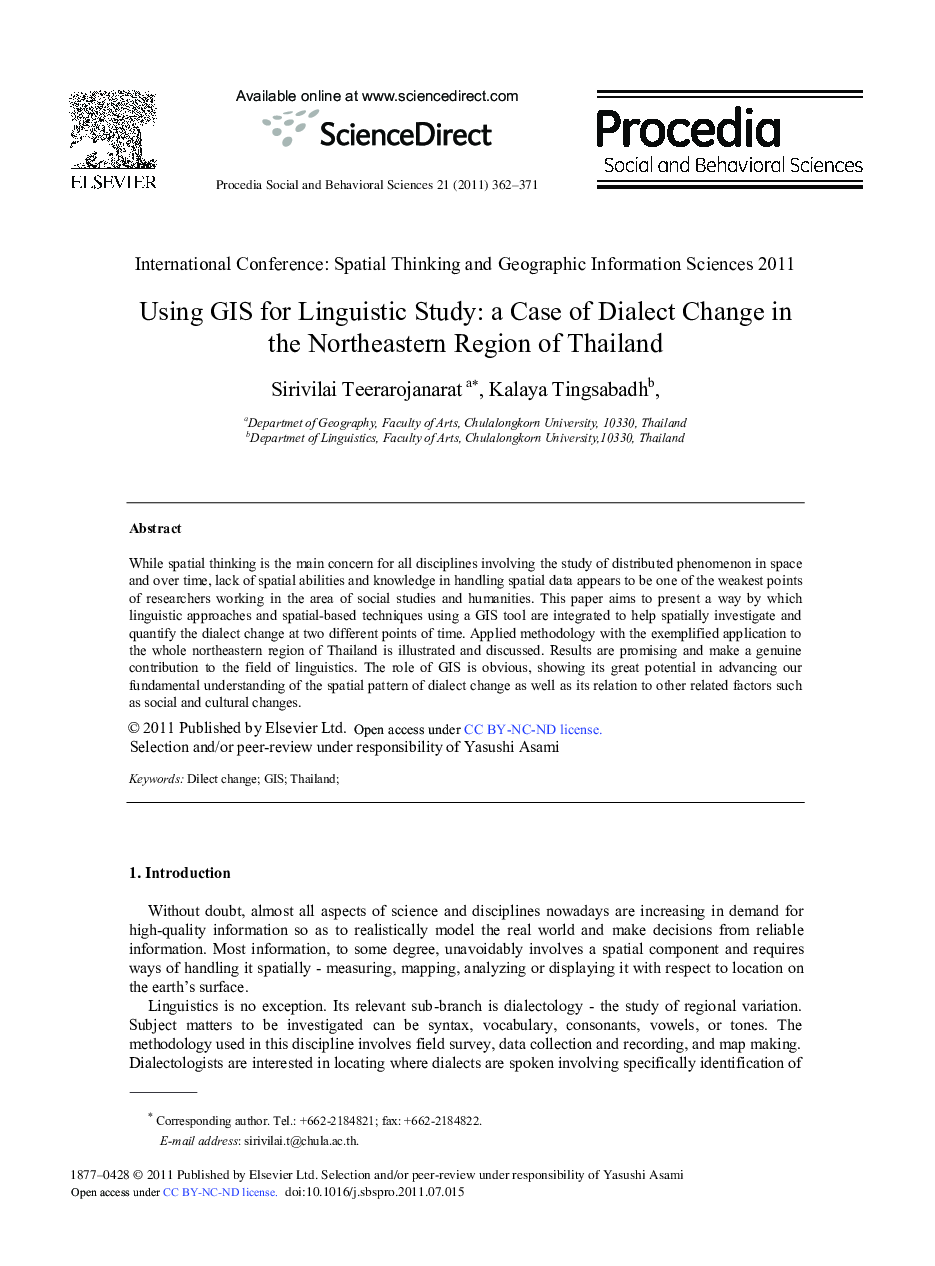| Article ID | Journal | Published Year | Pages | File Type |
|---|---|---|---|---|
| 1123964 | Procedia - Social and Behavioral Sciences | 2011 | 10 Pages |
While spatial thinking is the main concern for all disciplines involving the study of distributed phenomenon in space and over time, lack of spatial abilities and knowledge in handling spatial data appears to be one of the weakest points of researchers working in the area of social studies and humanities. This paper aims to present a way by which linguistic approaches and spatial-based techniques using a GIS tool are integrated to help spatially investigate and quantify the dialect change at two different points of time. Applied methodology with the exemplified application to the whole northeastern region of Thailand is illustrated and discussed. Results are promising and make a genuine contribution to the field of linguistics. The role of GIS is obvious, showing its great potential in advancing our fundamental understanding of the spatial pattern of dialect change as well as its relation to other related factors such as social and cultural changes.
